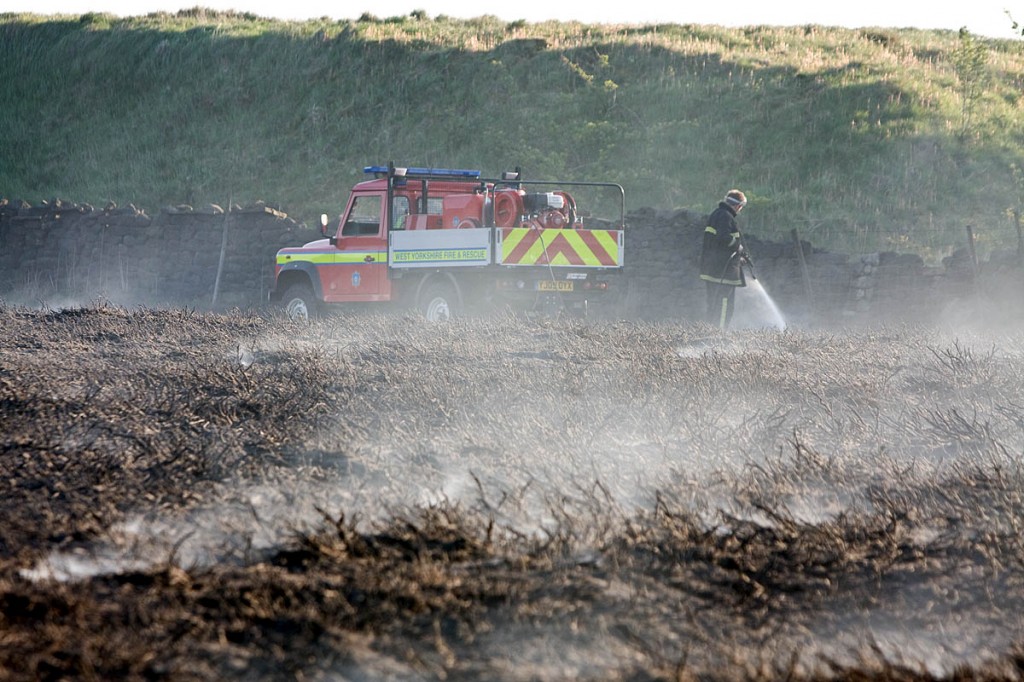Firefighters and national park staff will take part in a major practice exercise in the Peak District.
Crews from four fire services will join the simulated incident, along with rangers and academics.
Thursday’s exercise will involve high-volume water pumps and special vehicles to relay water from Arnfield Reservoir and Valehouse Reservoir, via Tintwistle Knarr Quarry, on to the moorland at Robinsons Moss.
Fire and rescue crews from Derbyshire, Greater Manchester, and South and West Yorkshire will be joined by Peak District national park rangers, under the banner of the Fire Operations Group, for training in using specialist moorland firefighting equipment.
Other bodies involved are the National Trust, United Utilities, Natural England and the recently formed group of keepers called Derwent & Snake Valley Rural Fire Team.
Ranger Gordon Danks, who chairs the Fires Operation Group, said: “The environmental consequences of wild and accidental fires can be catastrophic.
“They destroy habitats and erode the landscape. They can also be dangerous, so in the event of a moorland fire it is important that we are able to react quickly, safely and efficiently, and that’s why we hold regular training exercises.”
More than 400 fires have been recorded by Peak District national park rangers over the past 33 years. The moorlands are easily accessible and receive high annual numbers of visitors. The peat soil and vegetation mean that, in prolonged dry periods, the moors can be susceptible to catching fire.
As well as the obvious threats that a moorland fire can pose to visitors, they can also have a hugely damaging effect on plants and wildlife, including ground-nesting birds, along with sheep and cattle.
The most common causes of moorland fires are arson, discarded cigarettes, barbecues and campfires.
Simon Booth, watch manager of Blue Watch at Glossop fire station, said: “Time is of the essence when you are fighting fire and having a team of people trained in using the specialist equipment puts us in a better position when we’re tackling moorland and grassland fires.”
The Fire Operations Group was formed in 1996 after a serious moorland blaze. It brings together a partnership of six fire services, Peak District national park rangers, National Trust wardens, water companies, major landowners and gamekeepers.
The group draws up fire plans, oversees specialist firefighting equipment, raises awareness of moorland fires and the consequences, and carries out regular training exercises.
Also attending the exercise will be academics from the University of Manchester who have a long history of collaborative research supporting the Peak District Fire Operations Group with wildfire knowledge exchange and wildfire-risk mapping.

MR
24 September 2015Mountain Rescue teams need not apply then ??!!
Ian
02 October 2015I would have thought that (voluntary) Mountain Rescue Teams have enough to keep them busy without becoming an 'unpaid wing' of the (paid) Fire and Rescue Service and others.